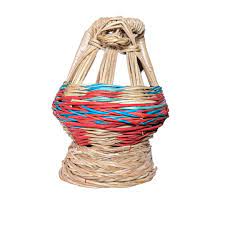Today’s Current Affairs: 16th Nov 2023 for UPSC IAS exams, State PSC exams, SSC CGL, State SSC, RRB, Railways, Banking Exam & IBPS, etc
Table of Contents
INS Sumedha:

INS Sumedha made a port call at Walvis Bay, Namibia.
- INS Sumedha in continuation with Indian Navy’s mission-based deployment to West Africa and Atlantic made a port call at Walvis Bay, Namibia.
- This port call is a manifestation of India’s warm ties with Namibia, its commitment to enhance maritime security and demonstrate solidarity with friendly nations.
INS SUMEDHA:-
- Built by: Goa Shipyard Limited.
- INS Sumedha is an indigenously built Naval Offshore Patrol Vessel.
- It is part of the Indian Navy’s Eastern Fleet based at Visakhapatnam.
- It is the third ship of the indigenous Naval Offshore Patrol Vessel (NOPV) Project to be inducted into the Indian Navy.
- It is deployed for multiple roles independently and in support of Fleet Operations.
- Its primary role is to undertake EEZ surveillance, anti-piracy patrols, fleet support operations, providing maritime security to offshore assets and carry out escort operations for high value assets.
Helicobacter pylori : Study

The National Institute of Cholera and Enteric Diseases has made quick detection of drug-resistant ‘Helicobacter pylori possible recently.
- A two-step PCR-based assay of a small region of the Helicobacter pylori (H. pylori) bacteria can help detect H. pylori infection and also identify clarithromycin-resistant bacteria and those that are drug-sensitive in six-seven hours has been developed by a team of researchers from the National Institute of Cholera and Enteric Diseases (ICMR-NICED), Kolkata.
Helicobacter pylori:-
- It is a bacterium that infects the stomach lining.
- It is linked to gastrointestinal issues like peptic ulcers and stomach cancer.
- About two-thirds of the world’s population has it in their bodies.
- For most people, it never causes any symptoms.
- In India, H. pylori infection affects 60-70% of the population.
- This usually happens during childhood and remains in the stomach throughout their life if not treated with antibiotics effectively.
- Symptoms:–
- An ache or burning pain in your stomach (abdomen)
- Stomach pain that may be worse when your stomach is empty
- Treatment:-
- Clarithromycin is an antibiotic commonly used to treat H. pylori infections, but drug-resistant strains in India have raised concerns about its effectiveness.
Bestu Varsh 2023 : Gujarati New Year

The Prime Minister of India has extended New Year greetings on the occasion of Gujarati New Year.
- Gujarati New Year 2023, also known as Padwa or Bestu Varas, is being celebrated on November 14.
- It is celebrated as part of the five-day Diwali Celebrations.
- It ideally falls on Pratipada of Shukla Paksha in the Kartik month (Hindu calendar month).
- The significance of this day is not just cultural but deeply linked with the financial aspect of the community.
- Traditional account books, locally known as Chopda, see a ceremonial inauguration during Diwali Puja, seeking blessings from Goddess Lakshmi for a prosperous year ahead.
- Chopda Pujan, a ritual where new account books are marked with auspicious symbols, sets the tone for a profitable financial year.
- Bestu Varas is not just a change in date; it’s a day of blooming desires and excitement.
- It’s a moment to retire the pains, sufferings, and memories of the past year and embrace the opportunities of the new one.
- The air is filled with the fragrance of incense, and the atmosphere is charged with positivity as traditional customs and rituals unfold, bidding farewell to the bygone time.
Global Positioning System Tracker Anklet:

A prisoner in Jammu and Kashmir was released on bail after he was tagged with a Global Positioning System (GPS) tracker anklet on his foot to monitor his movements.
- This is the first time in the country that a GPS tracker has been put to such use.
- GPS anklets are small, wearable devices that are attached to the ankles of individuals who are under some form of legal supervision, such as parole, probation, house arrest, or bail.
- The tracker can be put on the ankle or arm of a person.
- Thus, there are GPS anklets and GPS bracelets.
- GPS anklets are tamper-proof, and any attempt to remove or damage them triggers an alarm.
- They also have a battery life of several days and can be recharged by the wearer.
- GPS anklets can also be used to enforce curfews, travel restrictions, or other conditions imposed by the court or the supervising agency.
- GPS anklets use the GPS technology to provide the exact location of the wearer at all times, and allow law enforcement and security agencies to monitor their movements in real-time.
- GPS anklets alleviate criminal justice costs, easing prison overcrowding and directing resources to serious offenses.
- They balance public safety and rehabilitation by deterring crime, ensuring law compliance, and fostering offender well-being through family ties, education, and support services.
- GPS trackers are a precondition for bail in several countries including the United States, the United Kingdom, and Malaysia.
Picocystis Salinarum: Green Algae

A young researcher has divulged the secret of how the Picocystis Salinarum survives the harshest of conditions by resorting to physiological adaptation to highly saline-alkaline/hyperosmotic conditions.
- Picocystis Salinarum is a globally widespread picoplanktonic green algae of saline lakes.
- It is one of the smallest green algae.
- It is found in hypersaline soda lake Sambhar, Rajasthan, to survive extreme environments.
- Though the algae had been widely found in saline-soda lakes around the world, it was spotted for the first time in India only in the Sambhar Lake.
- The unique organism apparently enhances photosynthesis and ATP synthesis along with chaperone proteins as key response to high salinity-alkalinity.
- Enhanced photosynthetic activity exhibited by P. salinarum in highly saline-alkaline condition is noteworthy as photosynthesis is suppressed under hyperosmotic conditions in most photosynthetic organisms.
One Station One Product Scheme:

The “One Station One Product” initiative by the Indian Railways, which provides uniquely designed sale outlets for locals to sell indigenous products, is now operational at 1,037 stations nationwide.
- One Station One Product scheme is an initiative by the Indian Railways, under the Ministry of Railways.
- It was launched with a vision to promote ‘Vocal for Local’.
- It provides uniquely designed sale outlets for locals to sell indigenous products nationwide.
- This scheme is designed by the National Institute of Design, Ahmedabad.
- It aims to build each railway station as a promotional hub and showcasing local and indigenous manufacturing products.
- Under the scheme, the allotment is done to all eligible applicants on a rotational basis.
- The pilot of the scheme was started on March 25, 2022.
- This scheme is providing welfare of local artisans, potters, weavers, tribals etc.
- The eligible applicant will be allotted a temporary stall or kiosk for a period of 15 days on deposition of Rs 1,000 with Railways.
- Sale outlets are provided at stations nationwide, allotted through a tendering process.
- The zonal railways will identify the stations, eligible products and the vendors.
Tadoba-Andhari Tiger Reserve:

Tadoba-Andhari Tiger Reserve’s (TATR) dominant tiger, Bajrang, said to have sired at least 50 cubs during his lifetime, recently died in a territorial fight with another powerful tiger, Chhota Matka.
- Tadoba-Andhari Tiger Reserve (TATR) is located in the Chandrapur district in of Maharashtra.
- The origin of the name “Tadoba” lies with the name of the god “Tadoba” or “Taru”, worshipped by the tribes that live in the dense forests of the Tadoba and Andhari regions. “Andhari” refers to the Andhari River that meanders through the forest.
- The total area of the reserve is 625.4 sq. km. This includes Tadoba National Park, covering 116.55 sq. km and Andhari Wildlife Sanctuary, covering 508.85 sq. KM.
- The reserve has corridor linkages with Nagzira-Navegaon and Pench Tiger Reserves within the State.
- Biogeographically, the reserve falls in the Central plateau province of the Deccan Peninsula.
- The habitat has undulating topography in the north and is rich in biodiversity.
- There are two lakes and one waterway in the reserve, Tadoba Lake, Kolsa Lake, and the Tadoba River.
- The reserve is adorned with patches of grass and bamboo shrubberies.
- The notable faunal species include the tiger, leopard, sloth bear, wild dog, gaur, chital, and sambar.
- As many as 280 species of birds are found, apart from reptiles (54 species), amphibians (11 species), and fishes (84 species).
Trishakti Prahar:

Much-anticipated joint exercise ‘Trishakti Prahar’ recently began near the western border of Rajasthan in Jaisalmer.
- Trishakti Prahar is a joint military exercise involving the Indian Army, the Indian Navy, and the Indian Air Force.
- It aims to enhance mutual coordination and operational efficiency.
- It seeks to create new strategies and assess operational capabilities in the context of modern warfare.
- During the exercise, all three wings of the Indian Army actively engage in live practice sessions, simulating real war scenarios with complete coordination.
- The exercise includes long-range attacks by reconnaissance aircraft, emphasizing precision and high-volume attacks to effectively neutralize hypothetical adversaries.
- It involves a diverse array of military assets, including various types of howitzers, helicopters, and weaponry.
- This encompasses the deployment of the Army’s T-90s and Arjun main battle tanks.
- A major highlight of the exercise is the demonstration of the operational capability and readiness of the Pune-based Southwestern Command of the Indian Air Force.
- This segment showcases the Air Force’s preparedness for integrated air-land operations, combined arms operations, and its fast mobility and deep strike offensive capabilities.
- Fighter aircraft, Apache attack helicopters, Chinook heavy lift helicopters, and various Navy aircraft contribute to the multifaceted nature of the exercise.
- It serves as a platform to evaluate the effectiveness of modern warfare technologies such as unmanned aerial vehicles, precision-guided missiles, loiter munitions, counter-drone systems, communication systems, and automatic spectrum monitoring systems in a simulated operational environment.
Kangri : Traditional Fire pot Of Kashmir

As winter tightens its icy grip on the Kashmir valley, the traditional fire pot known as “Kangri” is seeing a surge in demand.
- The Kangri, also known as Kanger or Kangid, is earthenware filled with glowing embers and encased in pretty handmade wicker baskets.
- It is a portable and moving heater that Kashmiris keep in their pheran, a long woollen cloak reaching down to the knees worn by people during the frosty winters.
- A pot can hold about 250 grams of charcoal, and the fire, lasts for hours, under a pheran.
- It keeps people warm during the harsh winter months, when temperatures can drop below minus 20 degrees.
- It is known for its outer shell made of willow wicker reeds that grow abundantly in the wetlands of north Kashmir’s Ganderbal district.
- These reeds can reach eight feet in height and are harvested during autumn, just before demand for the fire pots swells.
- These then go through a multi-layered process of scraping and peeling to get rid of the bark, soaking, boiling, and drying before they are ready to be woven around a bowl-shaped clay pot.
- The earthenware is decorated with colourful threads, mirrorwork, and sequins and is about six inches (150 mm) in diametre.
Igla-S: Hand-Held Anti-Aircraft Missiles

Russia recently signed a contract to supply Igla-S hand-held anti-aircraft missiles to India and has allowed the production of the Igla under license.
- Igla-S is a man-portable air defence system (MANPADS) developed by Russia.
- It is known in the West as SA-24 Grinch.
- It entered service with the Russian Army in 2004.
- It can be fired by an individual or crew to bring down an enemy aircraft.
- It has the capability of bringing down low-flying aircraft. It can also identify and neutralise air targets, such as cruise missiles and drones.
- The Igla-S system comprises of combat equipment, including the 9M342 missile and the 9P522 launching mechanism, along with maintenance equipment, including the 9V866-2 mobile test station and the 9F719-2 test set.
- It has an effective range upto 6 km.
- The limiting altitude of effective target destruction for the “Igla-S” complex is 3.5 km.
- It has a heavier, more powerful warhead to maximize damage capabilities, as well as contact and timed fuzes for increased attack range.
- The warhead is a high-explosive fragmentation (HE-FRAG) and weighs 2.5 kg.
MQ-4C Triton: Uncrewed Aircraft

Northrop Grumman Corporation recently announced the successful maiden flight of Australia’s multi-intelligence MQ-4C Triton uncrewed aircraft.
- MQ-4C Triton built for both the U.S. Navy and the Royal Australian Air Force, the MQ-4C Triton stands as the sole uncrewed, high-altitude, long-endurance aircraft designed for persistent maritime intelligence, surveillance, reconnaissance, and targeting.
- It was developed by the Northrop Grumman Corporation, an American multinational aerospace and defense technology company.
- Its autonomous operations are supported by land-based command and control mission planners and sensor operators.
- The aircraft can fly over 24 hours at a time, at altitudes higher than 10 miles, with an operational range of 8,200 nautical miles.
- It has a length of 14.5m, a height of 4.7m, and a wingspan of 39.9m.
- It can hold a maximum internal payload of 1,452kg and an external payload of 1,089kg.
- It has a maximum speed of 600 km/hr.
- Triton will be equipped with a unique and robust mission sensor suite that provides 360-degree coverage on all sensors.
- Triton also incorporates a reinforced airframe for increased internal payload and a wing for hail, bird strike, and gust load protection.
- These features allow the aircraft to descend and ascend through harsh maritime weather environments to gain a closer view of ships and other targets at sea when needed.




